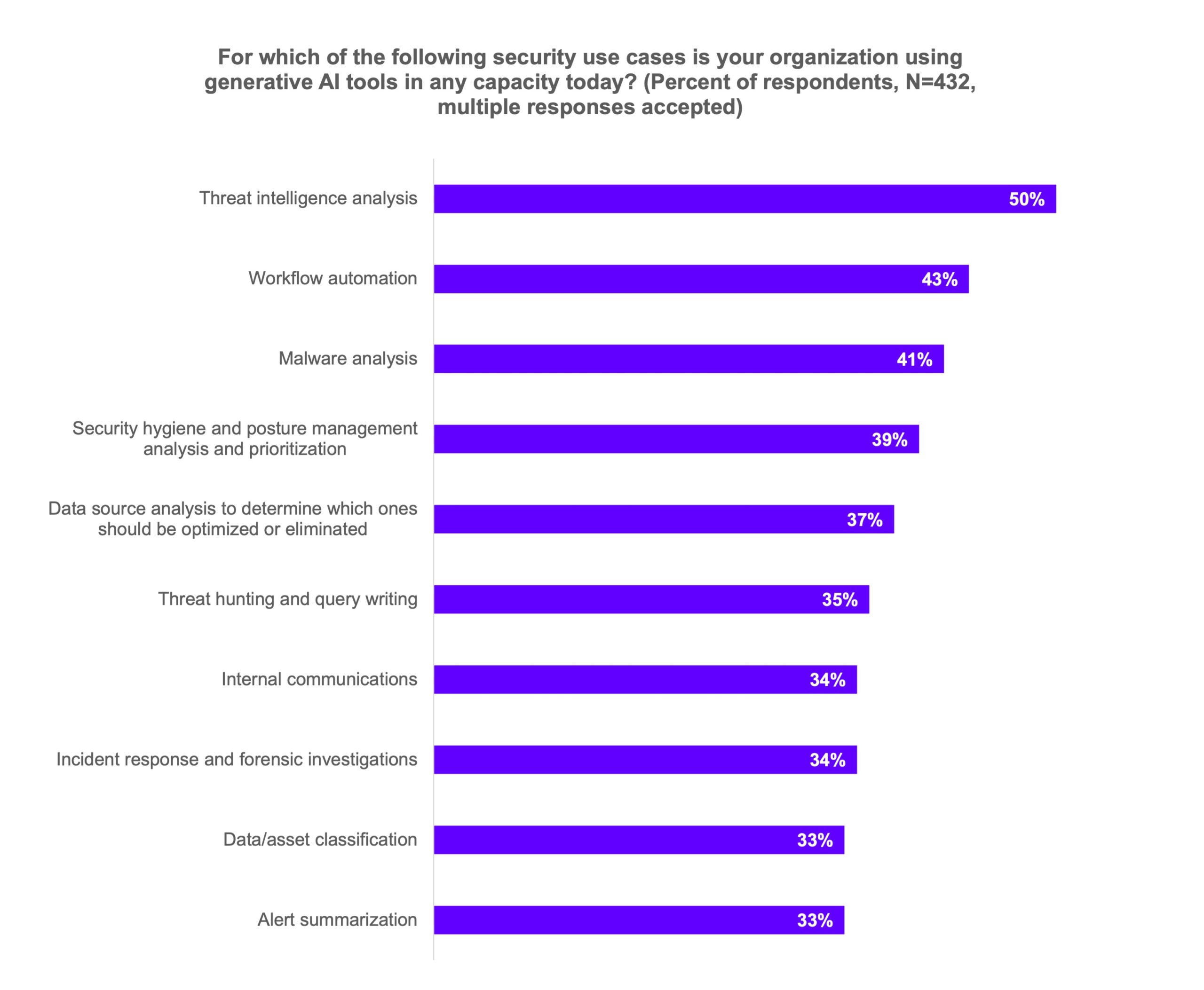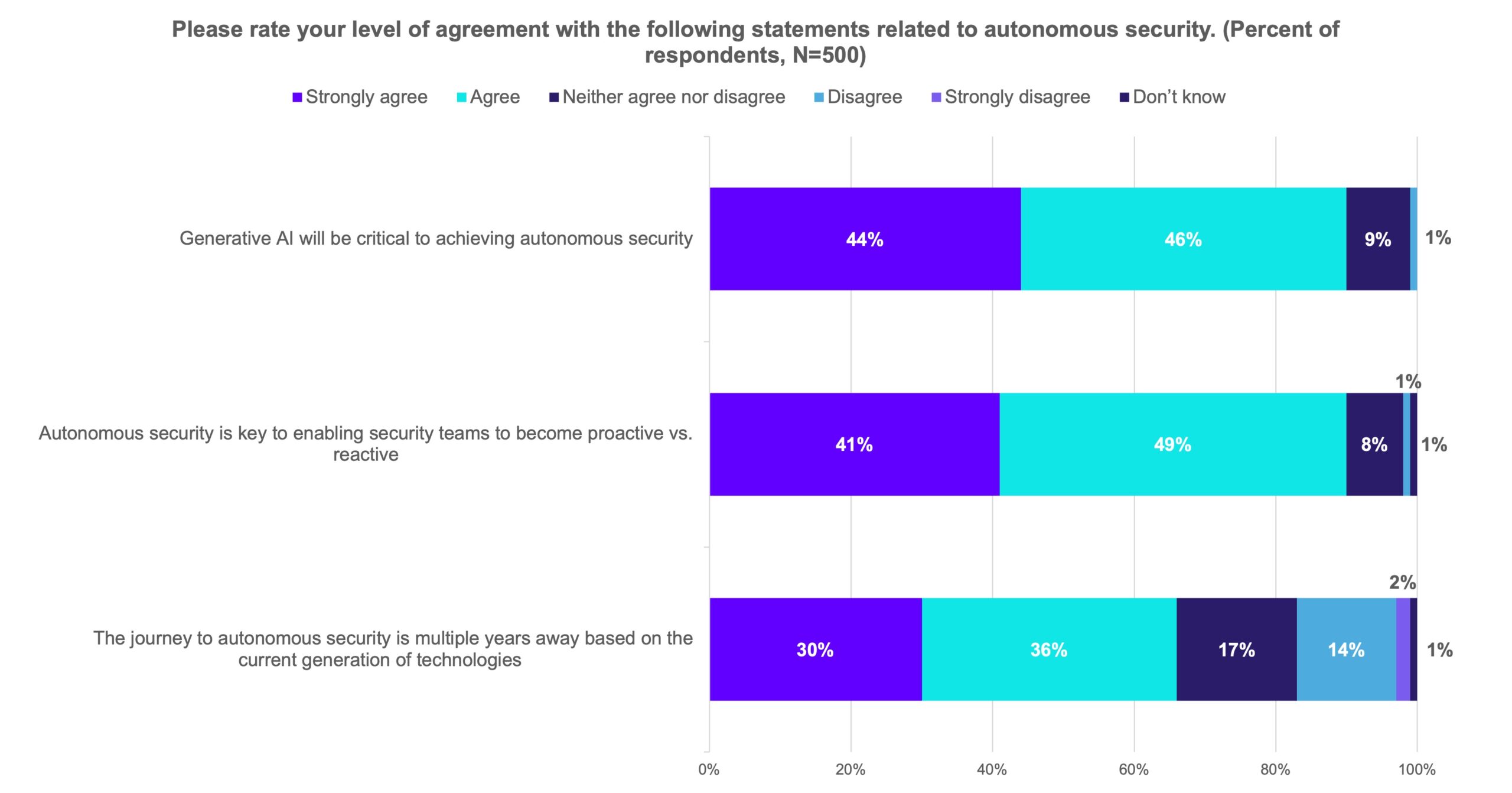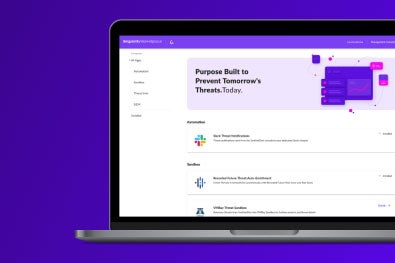The rapid adoption of Generative AI (GenAI) and the emergence of Agentic AI has unlocked new opportunities for security teams to better stay ahead of attacks. In security operations centers worldwide, organizations are rapidly adopting AI tools to augment human analysts, improve efficiency, and lay the foundation for a more autonomous SOC. Across the industry, the focus has shifted from whether to adopt AI – from behavioral AI and machine learning to generative AI and now agentic AI – to how to best implement AI for maximum impact.
A recent research study, commissioned by SentinelOne and conducted by Informa TechTarget’s Enterprise Strategy Group, sheds light on how organizations are embracing AI, what they expect from AI-powered security tools, and why AI is viewed as the key to achieving a more automated, resilient security posture. Let’s take a closer look at the key findings.

Real-World Impact | Where AI Is Making a Difference
The adoption of GenAI, alone, in security operations is accelerating at a remarkable pace. According to the study, 96% of SOC teams believe AI can improve their efficiency, and nearly 70% of organizations plan to increase spending on security tools with AI capabilities.
Organizations are already putting AI to work across multiple security use cases. Early adopters report using GenAI-powered solutions for threat intelligence analysis (50%), workflow automation (43%), and threat hunting and query writing (35%), among other tasks. As a result, SOC teams are not only becoming more efficient but also improving their ability to detect, investigate, and respond to threats in real time.

What does the advent of GenAI mean for security teams? Rather than replace human analysts, AI is helping alleviate workload pressures, enabling teams to shift their focus from manual, repetitive tasks to higher-level strategic work. 92% of respondents credited AI with improving their overall security posture, highlighting its potential to transform how SOC teams operate.
Performance Over Promises | Why AI Adoption Requires More Than Hype
Despite the excitement, security leaders are not jumping on the bandwagon without scrutiny. The study found that 88% of respondents require AI solutions to seamlessly fit into their existing workflows before they will consider adoption.
Organizations also emphasize performance, usability, and privacy when evaluating AI-powered tools. Across the industry, companies want AI that not only enhances security but does so in a way that aligns with risk management best practices. The top requirements include:
- Speed and responsiveness – Analysts need real-time assistance without delays.
- Context-aware recommendations – AI should generate intelligent, actionable insights based on threat intelligence.
- Human-in-the-loop oversight – While AI can accelerate decision-making, security leaders want solutions that keep human analysts in control.
- Data privacy assurances – Organizations demand AI systems that do not train on their sensitive security data.
The data also reveals that “AI washing”– where vendors overpromise AI capabilities by positioning their solutions as being powered by AI – remains a challenge. More than half (55%) of security professionals say AI-washing makes it harder to make informed decisions, reinforcing the need for transparent, reliable AI solutions that deliver real value.

The Path to an Autonomous SOC | AI is the Foundation
A major takeaway from the study is that organizations see AI as the bridge to a more autonomous SOC, where AI-driven automation enhances, rather than replaces, human expertise. While 90% of respondents agree that AI is critical to achieving a more autonomous SOC, full autonomy is still years away. In the near term, security leaders see AI autonomously taking on more operational, labor-intensive responsibilities while analysts focus on strategy, creative problem-solving, and deeper investigations. The most effective AI solutions empower analysts by providing actionable intelligence, reducing alert fatigue, and enhancing decision making.

At the core of this transformation is a shift from reactive security to proactive threat management. By automating detection, investigation, and response processes, AI enables SOC teams to anticipate and mitigate cyber risks before they escalate. AI-driven automation is already reshaping security operations, from generating complex queries to accelerating threat investigation. However, security leaders caution that achieving an autonomous SOC is a multi-year journey, with most organizations still in the early or mid-stage of this transition.
SentinelOne’s Perspective | Shaping the Future of AI-Driven Security
At SentinelOne, we’re building on GenAI to deliver agentic systems designed for security work. With Purple AI, SOC teams can go beyond prompting, to partnering with a well governed Security AI that reasons, decides and acts on their behalf.
What makes this possible is how Purple AI is trained. It is grounded in real-world security scenarios and built with expertise from our own industry-leading MDR team. Our AI mirrors the way analysts think, triage, and respond. This allows it to deliver context-aware, high-fidelity insights that analysts can trust and act on quickly.
Unlike traditional GenAI tools, Purple AI can summarize alerts, surface relevant threat intelligence, and automate routine tasks across the detection and response lifecycle, reducing manual effort and analyst fatigue while preserving human oversight.
Our AI is designed specifically to enhance humans, not replace them, and amplify analyst decision-making with intelligent automation to free up time for strategic work. It’s a foundational step toward realizing the vision of an autonomous SOC, built on the synergy between human expertise and actionable AI.
Looking Ahead | The AI-Powered SOC Is Taking Shape
The report makes it clear: AI is no longer an emerging concept in security – it’s already reshaping how SOC teams operate. Organizations are rapidly adopting AI to improve efficiency, streamline investigations, and strengthen security postures. However, they also demand AI solutions that meet high standards for usability and reliability.
As the industry moves toward a more autonomous SOC, GenAI and Agentic AI, in particular, will play a big role in amplifying human expertise, automating routine tasks, and enhancing cybersecurity resilience. The future isn’t about replacing analysts, but empowering them with AI to work better than ever before.


